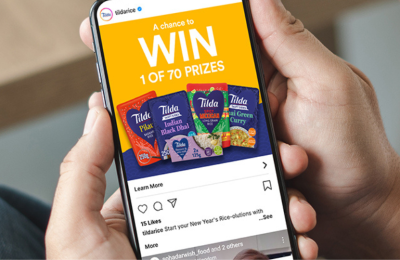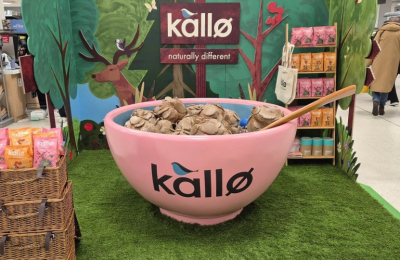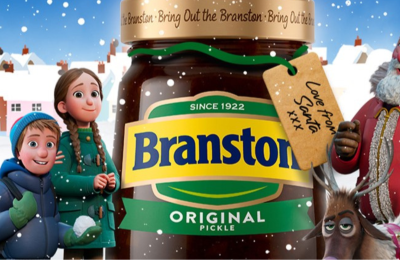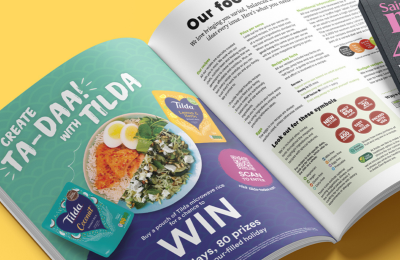By Carrie Chappell, Associate Director Haygarth.
“Thank you for delivering us the most comprehensive shopper tool kit the business has ever produced. I have no doubt this is going to help us shift the dial in sales across our markets.”
Lovely words to read from a happy client when you open your email inbox in the morning!
Gone are the days when a global tool kit consisted of a key visual, some POS examples and a ‘dos and don’ts’ section. These days, the complexity of markets, brands and shopper missions means that delivering something that is going to inspire, guide and deliver results, requires the right combination of strategic insight, creative brilliance, and practical application. But how do you achieve this?
The path to purchase has become more complex than ever, with shoppers able to buy their favourite goods with the sound of their voice as well the click of a button, anywhere and everywhere. As a result, consistency not only of a brand’s visual cues but message out of store through to shelf (virtual or otherwise) has never been more important and the drive for global consistency of communication never more sought after.
Listen, don’t impose
The starting point of any good shopper tool kit is insight and understanding. Not only of the applicable markets but of the different shoppers, their missions, their needs, the barriers and of course the reason they should care enough about your brand to put it in their basket or trolley.
In any strong and comprehensive shopper tool kit, this should all form part of the business context. What is driving brand performance, the business opportunity, the brand, and its objectives.
A valuable part of this insight gathering process is to talk to the key shopper contacts in each relevant market. Understanding the nuances of each market, their pain points, their shoppers, and their needs is critical, not only to ensuring the end shopper tool kit is fit for multi-market purpose, but also that markets feel they have had input. That they are on the journey with the global shopper team, rather than having a tool kit land in their laps, that they have had no or little role in. This also helps with local market buy in and compliance.
Focus on the shopper and context
It is important to help local market agencies to understand the mindset of the shopper in different stages of the path to purchase, and therefore the role of the types of point- of- sale assets they might generate. Taking into consideration whether a shopper is in their pre-store mindset or their at-shelf mindset, will help ensure that if assets are adapted, that they are still doing the necessary job. That might be emotionally engaging the shopper or overtly driving purchase conversion at the moment of truth – when the shopper is faced with the plethora of choice at shelf. And, as importantly is the digital shelf. Ensuring there is a strong e-commerce path to purchase will help guide markets in creating this seamless journey.
Same brand, different challenges
As strategy is developed, it is important to consider different market types. For example, when considering alcohol brands, whether a market is ‘dark’ and therefore the only form of communication about your brand will be what a shopper sees in store, versus an ‘open’ market, where they will see ATL and OOH before they get in store, will potentially have an impact on the imagery and the copy used on POS items. The market status, be it emerging or established will also have an impact.
Likewise, there are category considerations. Certain pharmaceutical, aesthetics and beauty products, or anything which could be considered in any form controversial, may require different visual and copy options, depending on how conservative or liberal a market it is. Giving guidance and options on this ensures markets aren’t forced to adapt on their own terms, which in turn drives greater inconsistency. Equally for beverage brands, particularly alcohol, it is important to ensure that the strategy is evolved to work for the on-trade, so that there is a consistent suite of comms across both channels.
From complexity to simplicity
This may all sound hugely complex, but the ideal toolkit provides simplicity. Ultimately it is about helping local markets with Global shopper solutions that are straightforward to deploy and solves local challenges. One necessary but often over-looked aspect is the guidelines around what can and can’t be removed, altered, positioned differently and indeed the key aspects of font, colour references and photography style.
The winning formula is hitting the balance between delivering enough information for the markets to get what, why and how to deliver best in class shopper assets, but not so much that it becomes overwhelming. The best tool kits need to be simple to follow and easy to use.
Successful shopper tool kits can be a labour of love but certainly worth investing time, money and energy in. When you think that they can end up setting the strategic direction and creative look and feel, for how a brand is communicated and perceived in store, for what is often a number of years, it is time well spent and immensely rewarding.

























